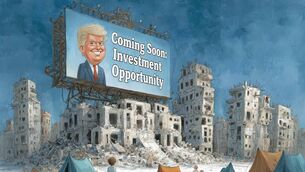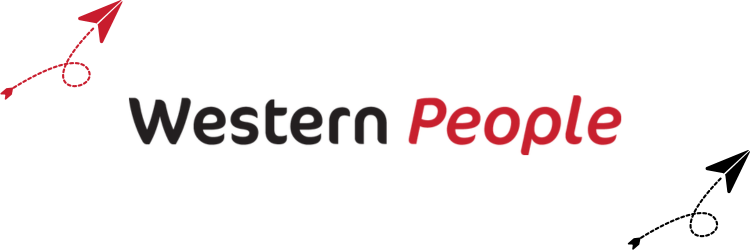Outward thinking is needed in the West

Galway East TD Seán Canney (centre) arrives at Government Buildings on Friday with fellow Regional Independent TDs Marian Harkin and Michael Lowry ahead of negotiations between Fianna Fáil, Fine Gael and the Regional Independents to form the next government. Picture: Leah Farrell/©RollingNews.ie
The GAA is a magnificent organisation. It has brought untold benefits into every corner of our country. It provides a great physical outlet for young and not so young. It also provides a social outlet for those players.
For those not involved as players, it can provide an outlet to be involved in their community, to participate in events like Scór, to be on various committees and to feel a real sense of belonging.
In rural Ireland, where social isolation can be a real problem, the GAA does so much to insulate people from this, giving people an outlet and a purpose. It might be going to matches, it might be a midweek card game in the clubhouse, it might be as simple as something to stop and talk to a neighbour on the road if the local club or the county team is going well. Or not so well – those conversations aren’t shirked either!
It provides a sense of identity and fosters community pride. When traversing the county last year for interviews for a book I wrote on GAA clubs in Mayo, I was reminded of all of this. Of how the GAA reaches into every corner of the county and does so much unseen work, provides such a great social good and creates a pride of place.
But I’ve often wondered if that sense of identity is a double-edged sword. The boundaries are very clearly defined. It is what makes the GAA great – to quote the old GAA ad, ‘you don’t choose your county, your county chooses you’. The same is true at club level.
You play for the club where you live or are born. The sense of identity is so strong that it is not considered remarkable that hundreds of footballers commute from Dublin to Mayo every weekend to line out for their clubs. Some have been even known to do it midweek too!
It is not just out of a sense of loyalty and identity that players do this. They want to play with their friends and they love their sport but it is nowhere near as common in soccer or rugby. The sense of identity the GAA fosters does underpin this. Same as county level where border areas like Shrule, Ballindine and Ballaghaderreen can be melting pots during the Connacht SFC.
The GAA makes us really proud of our club and our county but does it sometimes, as an unintended consequence, make us inward-looking and insular? More than anything else, the GAA has hardened the sense of county identity in this country.
The failed experiment that was part of south Mayo being part of the Galway West Dáil constituency for the 2016 and 2020 general elections showed just how strong county boundaries are. People in Shrule, Kilmaine and The Neale did not feel represented by Galway politicians, did not feel part of that constituency. It was nothing to do with the quality of politicians who were representing them and everything to do with identity.
They are far from alone. The same has been true of any small section of one county which has been siphoned off into another for electoral purposes. That underscores the difficulty of regional politics. One wonders if county pride has made it far easier for various governments to divide and conquer?
Of course, that is not to say we should not argue for our fair share as a county. Too often, we lie down and accept crumbs from the table. That subservient attitude has enabled a malaise from central government to our county and region throughout the history of the state. We should demand more but we should not stop at the county boundaries. A collective attitude is needed.
Mayo is part of the Northern and Western Regional Assembly (NWRA). They are based in Ballaghaderreen and I would hazard a guess few readers know a whole pile about the NWRA.
It is one of three regional assemblies in the country and the NRWA incorporates the five Connacht counties as well as Cavan, Monaghan and Donegal. They have the potential to be a key driver in providing for balanced regional development but, right now, are also a prism through which we can see the road that has to be travelled.
In 2022, the European Commission downgraded this region to a ‘lagging region’ when our GDP fell to 71% of the European average. In terms of infrastructural development, the Northern Western Region is ranked an alarming 218th out of 234 regions across Europe. Our Midlands and Eastern Region scores over three times higher for infrastructural development.
Yet there are few discussions at local authority level about regional development. We elect TDs and seek them to represent our county and our country but rarely our region.
It was encouraging in the last Dáil to see a collective of West of Ireland TDs form a group on issues of common interest, chiefly infrastructure in this region. There is strength in numbers, especially when depopulation means there are fewer TDs for this region than was once the case.
Galway East TD Seán Canney was a key driver in this collective and could well be among those who provide the numbers for Fianna Fáil and Fine Gael to form a government.
Canney’s inclusion in government would be great news for the West. A passionate GAA man, he has always had a regional mindset, not just limited to his own constituency and has, for instance, been a passionate supporter of the campaign to reopen the Western Rail Corridor from Athenry to Claremorris and onwards to Sligo.
The likes of Canney, retired TD Éamon Ó Cuív and all Mayo TDs have been very proactive in having a regional outlook.
The improvement of the N5 in Roscommon will have a big impact on travel times from Mayo to Dublin which will be a big boon for industry. The extension of the Western Rail Corridor from Athenry to Claremorris will also boost industry in the region and a collective, regional mindset is needed to ensure the railway line is also extended to Sligo.
The problems we are experiencing in so many rural parts of Mayo are echoed in other parts of Connacht and in the three Ulster counties which are part of the Republic.
GAA clubs are struggling for numbers. Rural schools are struggling to have enough children to stay open. Communities are struggling to have enough critical mass not to thrive but to merely survive.
Unless we can think both locally and regionally, we are doomed to failure.






